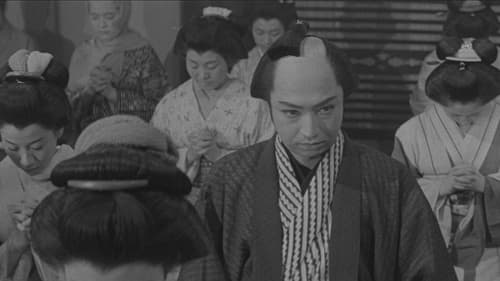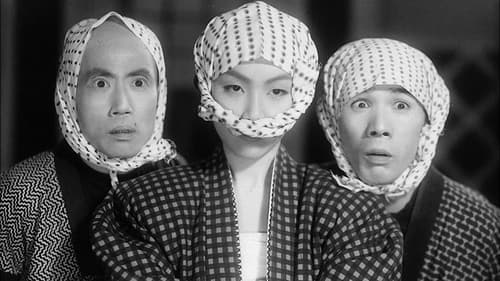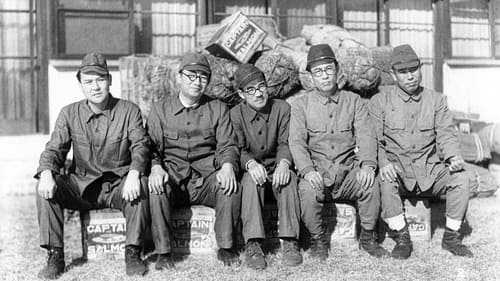
Director of Photography

Director of Photography
Japanese comedy film.

Cinematography
Sashichi investigates the mysterious murders of four beauties, all of whom were stabbed in the chest.

Director of Photography
Japanese comedy film.

Director of Photography
Japanese comedy film.

Director of Photography
Japanese comedy film.

Director of Photography
A 1954 film.

Cinematography
The story of a ghostly thief in Edo who calls himself the fireball guy.

Director of Photography
A comedic retelling of the legend of the loyal 47 ronin.

Director of Photography
Japanese comedy film.

Director of Photography
Japanese comedy film.

Director of Photography
Japanese comedy film.

Director of Photography
Postwar! Baseball! Comedy! Enoken plays a superfan of the Yomiuri Giants – the real Tokyo team, with many of its star players "acting" as themselves – who, despite his utter lack of athletic abilities, becomes embroiled in their successes, and their personal lives. Will Enoken help the Giants take the pennant?

Director of Photography

Cinematography
歌舞伎や講談で有名な伊達騒動を背景に、居合抜きの名人、三尺左吾平に「喜劇王エノケン」こと榎本健一が扮し、騒動解決に尽力する姿を喜劇的に描いた作品。刀も身長も三尺三寸で足が速いだけが自慢の左吾平が、殿様たちに気に入られ、用事を頼まれていくうちに、伊達騒動に巻き込まれていく。

Director of Photography
A 1943 film.

Cinematography
粗忽者だが、人助けが唯一の楽しみという仙台藩の純情家臣・磯川兵助。公儀の難題と勝負してどんな手柄をたてるのやら…。戦争真っ只中に封切られた作品であるが、エノケンは相変わらず持ち前のおかしさを発揮し、ロケ撮影のシーンの広々とした感じや馬が疾走する場面などセットの豪華さは、今の映画より豊かな印象を訴えてくる。

Director of Photography
A 1942 Jidaigeki by the veteran jidaigeki filmmaker Kunio Watanabe about the legendary warrior Musashibo Benkei
with Hideko Takamine portraying Minamoto no Yoshitsune (who is, of course, a man).
The film climaxes in the famous encounter/fight btw Benkei and Yoshitsune at the Gojo Bridge.

Cinematography
The title might sound shocking, but the red hands mean, the hands which drag fishnets. Ohama, 15 or 16 years old girl lost her family and lived alone in a fishermen's village. She is a strong-minded girl and very popular among young children.
I guess that this story is one of the origins of girl's manga in the 1950s in which I belonged to the first generation of Japanese story manga.

Cinematography
Song of the White Orchid was a co-production of Toho and Mantetsu, the railway that served the colonial region of Manchuria, and the first film in the Kazuo Hasegawa/Shirley Yamaguchi (Ri Koran) “Continental Trilogy.” Handsome Hasegawa (representing Japan) runs up against an impertinent Yamaguchi (representing the continent); not surprisingly, in the course of the film the woman comes around and realizes the benevolent intentions of the Japanese. In Song of the White Orchid Yamaguchi leaves Hasegawa, who plays an expatriate working for the railway, because of a misunderstanding. She joins a communist guerilla group plotting to blow up the Manchurian railway. Learning of the subterfuge that led to the misunderstanding, she renews her faith in Hasegawa—and by extension Japan—and tries to undermine the plot.

Director of Photography

Cinematography
The prewar film Haha no kyoku (Mother's Melody, 1937) is known for its place in Japanese film history as one of the top three melodramas as well as for its authorship: Yamamoto Satsuo is an auteur not usually associated with filming melodramas. Yamamoto made the film right after he moved, along with his mentor Naruse Mikio, to the Toho film company. A number of subsequent postwar mother's films adopted some of its essences, making it a genre-defining moment in Japanese cinema. This great melodrama is atypical of Yamamoto's output, much of which deals with political corruption and inequities within social institutions and offers a strong anti-establishment appeal.







